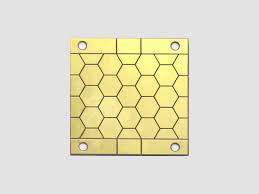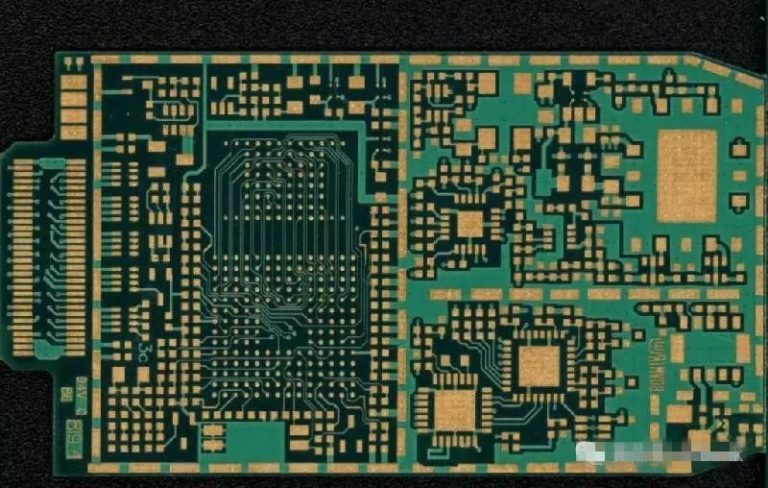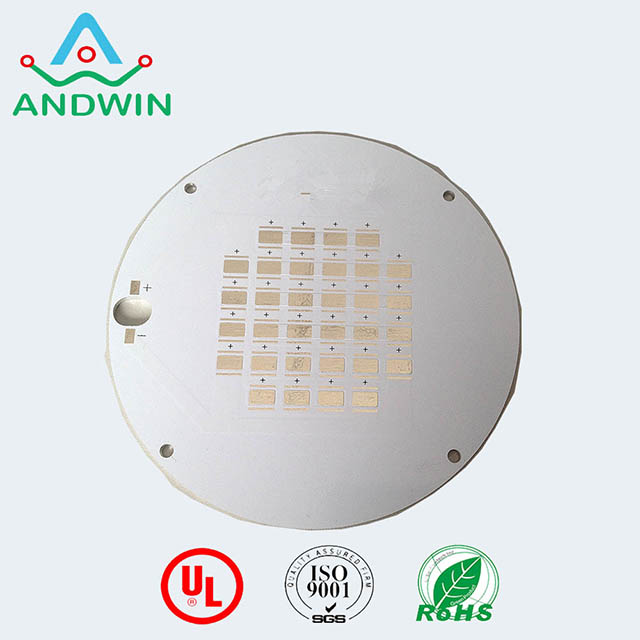5G of PCB substrates to improve CCL technology level

The key tasks of my country’s copper clad laminate (CCL) industry in the future development strategy, specifically in terms of products, should be to make efforts on the five major categories of new PCB substrate materials, that is, through the development and technological breakthroughs of the five major categories of new substrate materials , which has improved my country’s CCL cutting-edge technology. The development of the five categories of new high-performance CCL products listed below is a key topic that engineering and technical personnel in my country’s copper-clad laminate industry should pay attention to in future research and development.
GET PCB MANUFACTURING AND ASSEMBLY QUOTE NOW!
Lead-free compatible copper clad laminate
At the EU meeting on October 11, 2002, two “European Directives” on environmental protection were adopted. They will be officially fully implemented on July 1, 2006. The two “European Directives” refer to the “Waste of Electrical and Electronic Products Directive” (WEEE for short) and the “Restriction on the Use of Specific Hazardous Substances” (RoHS for short). In these two regulatory directives, the requirements are clearly mentioned. The use of lead-containing materials is prohibited, so developing lead-free copper clad laminates as soon as possible is the best way to deal with these two directives.
High performance copper clad laminate
The high-performance copper clad laminates referred to here include low dielectric constant (Dk) copper clad laminates, high-frequency and high-speed PCB copper clad laminates, high heat-resistant copper clad laminates, and various substrate materials (resin-coated copper cladding) for build-up multilayer boards. Foil, organic resin film constituting the insulating layer of a laminated multilayer board, glass fiber reinforced or other organic fiber reinforced prepreg, etc.). In the next few years (to 2010), in the development of this type of high-performance copper-clad laminate, based on the predicted development of future electronic installation technology, the corresponding performance index values should be achieved.
Substrate materials for IC packaging carrier boards
The development of substrate materials used for IC packaging carrier boards (also known as IC packaging substrates) is currently a very important issue. It is also an urgent need to develop my country’s IC packaging and microelectronics technology. As IC packaging develops toward higher frequency and lower power consumption, IC packaging substrates will improve in important properties such as low dielectric constant, low dielectric loss factor, and high thermal conductivity. An important topic for future research and development is effective thermal coordination and integration of substrate thermal connection technology-heat dissipation.
GET PCB AND ASSEMBLY SERVICE QUOTE NOW!
In order to ensure the degree of freedom in IC packaging design and the development of new IC packaging technology, it is indispensable to carry out model testing and simulation testing. These two tasks are very meaningful for understanding and mastering the characteristic requirements of substrate materials for IC packaging, that is, understanding and mastering its electrical properties, heating and heat dissipation performance, reliability and other requirements. In addition, further communication should be conducted with the IC packaging design industry to reach a consensus. The properties of the developed substrate materials will be provided to designers of complete electronic products in a timely manner, so that designers can establish an accurate and advanced data basis.
The IC packaging carrier board also needs to solve the problem of inconsistency in thermal expansion coefficient with the semiconductor chip. Even for multilayer boards using the built-up method, which are suitable for the production of micro circuits, there is a problem that the thermal expansion coefficient of the insulating substrate is generally too large (generally the thermal expansion coefficient is 60 ppm/°C). The thermal expansion coefficient of the substrate reaches about 6ppm, which is close to that of the semiconductor chip, which is indeed a “difficult challenge” to the manufacturing technology of the substrate.
To adapt to the development of high-speed, the dielectric constant of the substrate should reach 2.0, and the dielectric loss factor can be close to 0.001. For this reason, a new generation of printed circuit boards that transcend the boundaries of traditional substrate materials and traditional manufacturing processes is predicted to appear in the world around 2005. The technological breakthrough is first of all a breakthrough in the use of new substrate materials.
It is predicted that the future development of IC packaging design and manufacturing technology will have stricter requirements on the substrate materials used. This is mainly reflected in the following aspects: 1. High Tg corresponding to lead-free solder. 2. Achieve low dielectric loss factor matching the characteristic impedance. 3. Low dielectric constant corresponding to high speed (ε should be close to 2). 4. Low warpage (improvement of the flatness of the substrate surface). 5. Low moisture absorption. 6. Low thermal expansion coefficient, making the thermal expansion coefficient close to 6ppm. 7. The low cost of IC packaging carrier board. 8. Low-cost substrate material with built-in components. 9. In order to improve the thermal shock resistance, the basic mechanical strength is improved. A substrate material suitable for cycling from high to low temperatures without degrading performance. 10. A green substrate material that achieves low cost and is suitable for high reflow soldering temperatures.

Your Content Goes HereCopper clad laminate with special functions
The special-function copper-clad laminates referred to here mainly refer to: metal-based (core) copper-clad laminates, ceramic-based copper-clad laminates, high dielectric constant boards, and copper-clad laminates (or substrate materials) for embedded passive component multilayer boards. , copper clad laminates for optical-electrical circuit substrates, etc. The development and production of this type of copper-clad laminate is not only a need for the development of new technologies for electronic information products, but also a need for the development of my country’s aerospace and military industries.
High performance flexible copper clad laminate
the large-scale industrial production of flexible printed circuit boards (FPC), it has experienced more than thirty years of development. In the 1970s, FPC began to enter truly industrialized mass production. In the late 1980s, due to the advent and application of a new type of polyimide film material, FPC became an adhesive-free FPC (generally referred to as “two-layer FPC”). In the 1990s, photosensitive covering films corresponding to high-density circuits were developed in the world, which led to a major change in FPC design. Due to the opening up of new application fields, the concept of its product form has undergone considerable changes, including expanding it to a wider range including TAB and COB substrates. The high-density FPC that emerged in the second half of the 1990s began to enter large-scale industrial production. Its circuit graphics are rapidly developing to a more detailed level. The market demand for high-density FPC is also growing rapidly.
At present, the annual output value of FPC production in the world reaches approximately 3 billion to 3.5 billion US dollars. In recent years, the world’s FPC production has continued to grow. Its proportion in PCB is also increasing year by year. In countries such as the United States and Japan, FPC accounts for 13%-16% of the entire printed circuit board output value. FPC has increasingly become a very important and indispensable type of PCB.
In terms of flexible copper-clad laminates, there is a big gap between my country and the world’s advanced countries and regions in terms of production scale, manufacturing technology level and raw material manufacturing technology. This gap is even larger than that of rigid copper-clad laminates.
Expert opinion: Copper-clad laminates should develop simultaneously with PCBs
As a substrate material in PCB manufacturing, copper clad laminate (CCL) mainly plays the role of interconnection, insulation and support for PCB. It has a great impact on the transmission speed, energy loss and characteristic impedance of signals in the circuit. Therefore, PCB The performance, quality, processability in manufacturing, manufacturing level, manufacturing cost, and long-term reliability and stability largely depend on the copper clad laminate material.
Copper-clad laminate technology and production have gone through more than half a century of development. Now the annual output of copper-clad laminates in the world has exceeded 300 million square meters. Copper-clad laminates have become an important component of basic materials in electronic information products. The copper-clad laminate manufacturing industry is a sunrise industry. It has broad prospects with the development of electronic information and communication industries. Its manufacturing technology is a multi-disciplinary advanced technology that intersects, penetrates and promotes each other. The development process of electronic information technology shows that copper clad laminate technology is one of the key technologies that promotes the rapid development of the electronic industry.
The development of copper-clad laminate technology and production is synchronous and inseparable from the development of the electronic information industry, especially the PCB industry. This is a process of continuous innovation and pursuit. The progress and development of copper-clad laminates are always driven by the innovation and development of electronic complete products, semiconductor manufacturing technology, electronic installation technology, and PCB manufacturing technology.
The rapid development of the electronic information industry has led to the development of electronic products in the direction of miniaturization, functionality, high performance, and high reliability. From general surface mount technology (SMT) in the mid-1970s to high-density interconnection surface mount technology (HDI) in the 1990s, as well as the application of various new packaging technologies such as semiconductor packaging and IC packaging technology that have emerged in recent years, Electronic installation technology continues to develop towards high density.
At the same time, the development of high-density interconnection technology promotes the development of PCB in the direction of high density. The development of installation technology and PCB technology has made the technology of copper-clad laminate, a PCB substrate material, also continue to advance.

GET PCB MANUFACTURING AND ASSEMBLY QUOTE NOW!
Expert predictions
The average annual growth rate of the world’s electronic information industry in the next 10 years will be 7.4%. By 2010, the world’s electronic information industry market will reach 3.4 trillion US dollars, of which electronic machines will account for 1.2 trillion US dollars, and communication equipment and computers will account for 70% of it. % or more, reaching 0.86 trillion US dollars. It can be seen that the huge market for copper-clad laminates as electronic basic materials will not only continue to exist, but also continue to develop at a growth rate of 15%. Relevant information released by the Copper Clad Laminate Industry Association shows that in the next five years, in order to adapt to the development trends of high-density BGA technology, semiconductor packaging technology, etc., the proportion of high-performance thin FR-4, high-performance resin substrates, etc. will become larger and larger.







